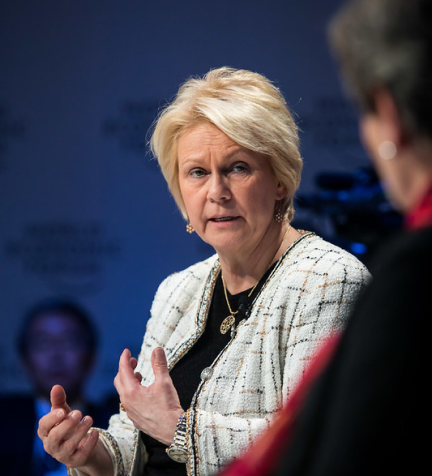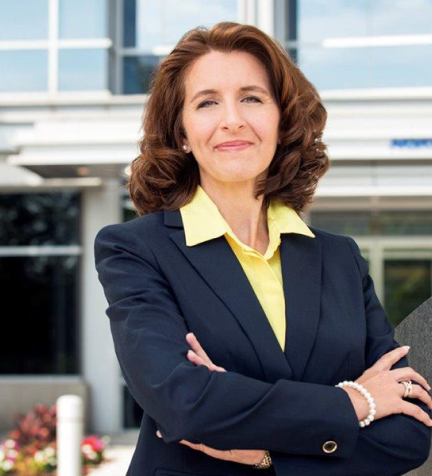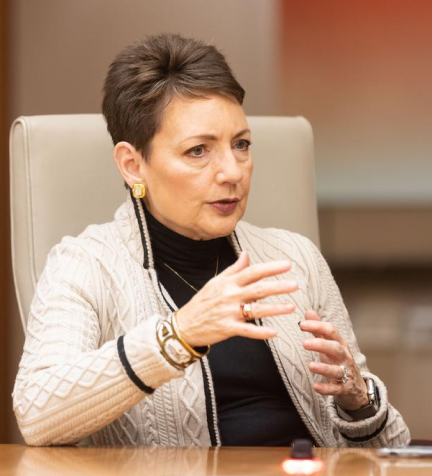The oil and gas sector, a cornerstone of the global economy, is undergoing a transformative shift towards diversity and inclusion. Historically characterized by its uniformity, the industry is now embracing the rich tapestry of varied perspectives that come with a more diverse workforce. The importance of this shift cannot be overstated; research has repeatedly shown that diverse teams are not only better for innovation but also lead to happier and more productive employees, ultimately increasing retention levels.
This blog aims to shine a spotlight on the significant contributions of women in the oil and gas industry. Despite the sector’s traditional male dominance, female leaders are breaking barriers and shaping the future of energy. Their stories are not just narratives of personal triumph but also blueprints for innovation and sustainability in an industry at the cusp of change. Through this exploration, we celebrate the achievements of women who are redefining leadership and driving the sector towards a more inclusive and dynamic future.
The Current State of Women in Oil and Gas
Female Participation in the Workforce: Women’s participation in the oil and gas industry has seen a gradual increase but remains relatively low. According to recent data, women make up nearly one-quarter of oil and gas employees worldwide, with 17% occupying senior and executive-level positions and 27% filling entry-level jobs. However, another study indicates that only 15% of the oil and gas workforce is female, which drops to half when considering higher-paying technical jobs.
Barriers Faced by Women: Women in the oil and gas sector encounter several barriers, including gender bias, lack of access to education in STEM fields, and challenges in accessing capital. The wage gap is also significant, with women in energy earning 19% less than men. These barriers hinder not only the entry of women into the sector but also their advancement to leadership roles.
Progress and Regress: The percentage of women working in the oil and gas industry has remained unchanged at 22% since 2017. While there has been an increase in diversity and inclusion policies and programs, the actual outcomes in terms of female representation have stalled, highlighting the need for continued focus and action to improve diversity and inclusion in the sector. The share of women on boards of oil and gas companies reached 14% in 2019, double the level in 2009, indicating some progress in leadership representation.
These statistics and trends underscore the importance of concerted efforts to address the barriers and create a more inclusive environment for women in the oil and gas industry.
Trailblazers: Women Leading the Way

Vicki Hollub
- Company: Occidental Petroleum
- Position: Chief Executive Officer
- Achievements: Vicki Hollub made history as the first woman to head a major American oil company. Under her leadership, Occidental has made significant strides in carbon capture technology and sustainable practices.
- Leadership Style: Hollub’s leadership is characterized by a focus on innovation and sustainability. She advocates for responsible energy production and has been instrumental in steering her company towards a lower-carbon future.
- Contribution: Her strategic vision has positioned Occidental as a leader in reducing the environmental impact of energy production.
- Advice: “Embrace challenges as opportunities to learn and grow. The energy sector needs diverse perspectives to drive innovation. “
Patty Eid
- Company: Petrofac Training Services
- Position: Global Head
- Achievements: Patty Eid has been a driving force in developing training programs that enhance safety and operational excellence across the industry.
- Leadership Style: Eid is known for her collaborative approach, ensuring that knowledge and best practices are shared across the global workforce.
- Contribution: Her work in training and development has raised the bar for industry standards in safety and efficiency.
- Advice: “Leadership is about empowering others. Invest in people, and the returns will multiply.”

Barbara Baumann
- Company: Devon Energy Corporation
- Position: Chair
- Achievements: With a wealth of experience in finance and strategic planning, Barbara Baumann has guided Devon Energy through periods of significant change, fostering resilience and adaptability.
- Leadership Style: Baumann’s style is analytical and forward-thinking, always anticipating the next trend or challenge on the horizon.
- Contribution: Her financial acumen has been crucial in Devon’s growth and stability, even during volatile market conditions.
- Advice: “Stay curious and never stop learning. The energy industry is constantly evolving, and so should you.”
Lynn Good
- Company: Duke Energy Corporation
- Position: Chairman, CEO, & President
- Achievements: Lynn Good has been at the forefront of transforming Duke Energy into one of the nation’s largest electric power companies, with a strong emphasis on renewable energy.
- Leadership Style: Good leads with a vision for a sustainable energy future, balancing the needs of customers, shareholders, and the environment.
- Contribution: Her push for cleaner energy sources has significantly influenced the industry’s move towards sustainability.
- Advice: “Integrity and accountability are paramount. Lead by example and make decisions that you can stand behind.”

Kathy Warden
- Company: Northrop Grumman
- Position: CEO, President, and Chairman
- Achievements: Kathy Warden’s strategic leadership has expanded Northrop Grumman’s market presence and driven innovation in energy solutions for the aerospace and defense sectors.
- Leadership Style: Warden is known for her decisive and strategic decision-making, fostering a culture of innovation and excellence.
- Contribution: Her leadership has not only advanced Northrop Grumman but also contributed to the broader conversation on energy security and technological advancement.
- Advice: “Dare to lead differently. The best solutions often come from thinking outside the conventional framework.”
These women exemplify the transformative power of female leadership in the oil and gas industry. Their stories are a testament to the fact that with determination, expertise, and a willingness to challenge the status quo, women can not only succeed but also become influential leaders driving the sector forward.
Innovations and Contributions by Women in the Field
Women in the oil and gas sector have been instrumental in driving innovations and leading projects that emphasize sustainability, efficiency, and technological advancements. Here are some notable contributions:
Sunaina Pai Ocalan at Hess Corporation has been pivotal in steering the company towards sustainable energy and decarbonization. Her role in Hess’s carbon credits deal with the Government of Guyana in 2021 is a landmark effort in emissions reduction.
Maria Kuosa, CEO of Aeromon, has led her company to revolutionize the approach to detecting and quantifying methane emissions. This innovation significantly contributes to environmental preservation and operational efficiency.
Nor A’in Md Salleh has been spearheading Carbon Capture & Storage (CCS) initiatives at PETRONAS. Her work in developing CCS technologies is a critical step towards achieving carbon neutrality and mitigating climate change impacts.
These women are not only breaking barriers in a traditionally male-dominated field but are also shaping the future of the industry with their contributions. Their leadership and commitment to fostering diversity and inclusion are integral to the industry’s continued success, driving more innovative and inclusive solutions for clean energy transitions. Their expertise in areas such as reservoir modeling and data analytics has been instrumental in optimizing exploration and production processes, reducing environmental impacts, and ensuring the industry’s long-term viability.
The impact of these contributions is profound, as they help the industry adapt to the evolving demands of energy production and environmental stewardship, setting a course for a more sustainable and efficient future.

The Future of Algae Biofuels in the Petroleum Sector
Women in the oil and gas industry face several unique challenges that can hinder their career progression:
- Gender Bias: Despite progress, gender bias remains a significant barrier. Women often report feeling unwelcome and believe they do not receive the same recognition as their male colleagues.
- Work-Life Balance: The demanding nature of the industry, with its long hours and sometimes remote locations, can make it difficult for women to balance work and family commitments.
- Lack of Representation: Women are underrepresented in leadership roles within the sector. Only a third of entry-level employees and even fewer in top management positions are female, which can discourage women from aspiring to these roles.
The industry can support and empower more women to take on leadership positions through:
- Mentorship Programs: Establishing mentorship programs can provide women with guidance and support for career advancement.
- Networking Opportunities: Creating platforms for women to connect and share experiences can foster a sense of community and encouragement.
- Scholarships and Training: Offering scholarships and specialized training can encourage young women to pursue careers in energy-related fields.
To support women in leadership roles, the industry can:
- Promote Diversity: Companies with a significant share of female leaders often outperform their peers, suggesting that diverse leadership leads to greater success.
- Address Wage Gaps: Ensuring equal pay for equal work is fundamental to attracting and retaining female talent.
- Foster Inclusive Cultures: Developing policies and practices that promote inclusivity can help women thrive in the workplace.
By addressing these challenges and leveraging opportunities for growth, the oil and gas industry can create a more diverse and dynamic workforce, ready to meet the demands of the future.
There are several initiatives and programs designed to support women in the oil and gas industry. These aim to foster an environment of inclusion, provide mentorship, and offer professional development opportunities. Here are some notable examples:
Mentorship Programs:
- Women Offshore MentorSHIP: This program connects women globally who work in maritime or offshore oil and gas industries for mentoring relationships.
- Women in Oil and Gas (WIOG) Mentoring Program: Designed to facilitate mentoring relationships between experienced professionals and those seeking career development.
Networking Events:
- Women in Oil and Gas Association (WOGA): Offers various opportunities to mentor and encourage women in the industry through events and networking.
- Women’s Energy Council: Provides a platform for senior female executives to discuss business strategy and network.
- Women in Oil and Gas Events: Hosts events like ‘Putting Purpose Back into Leadership’ and discussions on diversity and inclusion.
Professional Development:
- Empowerment Through Education: An initiative by Women in Oil and Gas, offering training and development programs covering technical skills and industry knowledge.
- Women and Minorities in Oil Natural Gas Industry: Projects job opportunities for women in roles such as engineers and geoscientists, emphasizing the need for four-year degrees.
Interested individuals can get involved by visiting the websites of these organizations and signing up for their programs or attending their events. These resources are invaluable for women looking to advance their careers in the oil and gas industry.

The journey towards gender diversity and inclusion in the oil and gas industry is a collective endeavor that requires the commitment of everyone within the sector. Men and women alike must champion the cause, recognizing that a diverse workforce is not just a moral imperative but a strategic advantage.
For Companies:
- Develop clear policies that promote diversity and inclusion at every level of the organization.
- Establish mentorship programs, networking groups, and career development opportunities specifically for women.
- Offer flexible working arrangements and parental leave policies that support both men and women.
For Individuals:
- Support and advocate for your female colleagues, recognizing their contributions and promoting their advancement.
- Engage with resources and training on diversity and inclusion to better understand the challenges and how to address them.
- Demonstrate inclusive behavior and challenge biases, both in yourself and others.
Throughout this blog, we’ve explored the current state of women in the oil and gas industry, celebrated the trailblazers leading the way, and examined the innovations and contributions made by women. We’ve also delved into the challenges they face and the opportunities that lie ahead, highlighting the importance of initiatives and programs that support gender diversity.
Women’s leadership and innovation are not just beneficial but crucial for the future of the oil and gas industry. As the sector continues to evolve, the perspectives and skills that women bring will be instrumental in driving sustainable growth and innovation.
Let us all, therefore, commit to fostering an environment where women can thrive and lead. Together, we can ensure that the oil and gas industry is not only prosperous but also equitable and resilient.





I have been surfing online more than 3 hours today yet I never found any interesting article like yours It is pretty worth enough for me In my opinion if all web owners and bloggers made good content as you did the web will be much more useful than ever before.
I truly relished the effort you’ve put in here. The sketch is stylish, your authored material chic, however, you seem to have developed some anxiety about what you intend to deliver subsequently. Assuredly, I will revisit more regularly, akin to I have nearly all the time, in the event you maintain this rise.
I truly appreciated the work you’ve put forth here. The sketch is tasteful, your authored material stylish, yet you appear to have developed some nervousness regarding what you intend to deliver next. Rest assured, I’ll return more regularly, much like I’ve done almost constantly, should you maintain this upward trajectory.
This website is an absolute gem! The content is incredibly well-researched, engaging, and valuable. I particularly enjoyed the [specific section] which provided unique insights I haven’t found elsewhere. Keep up the amazing work!